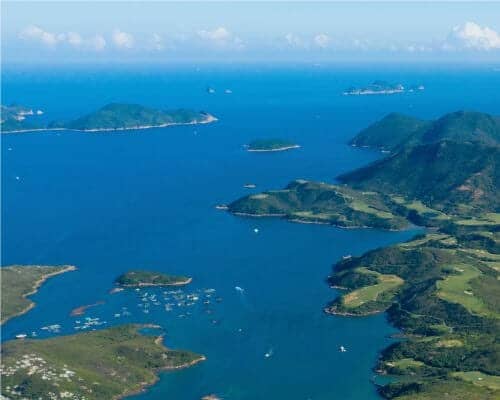Tuna pioneer takes Century to the next level
By: Tina Arceo-Dumlao – Business Features Editor / @tinaarceodumlao
Philippine Daily Inquirer / 12:02 AM May 05, 2014
Filipinos are estimated to consume about three cans of tuna a year, and expectations are that as purchasing power strengthens, this will rise to at least five cans of tuna over the next few years, bringing the consumption level closer to that of other countries in the region.
That Filipinos have canned tuna in their cupboards is due primarily to the foresight and ambition of Ricardo S. Po, 81, who took the long and winding road toward establishing the country’s largest producer of canned food, and introducing Filipinos to the concept of eating tuna from a can.
Like many entrepreneurs of Chinese origin, Po was born to a poor family. He recalls how he and his mother were separated from his father due to conflict in China. From Guangzhou, he and his mother moved to Manila in 1947 when he was 15, following the footsteps of other Chinese families who sought a better life in another country. They knew nobody, spoke no English or Filipino, but they persevered in their new homeland, with Po’s mother taking on all kinds of jobs just so they would have something to eat.
“I know how it is to be hungry,” explains Po, who taught himself English by studying a Chinese-English dictionary and first earned money by offering translation services for Chinese businessmen in Binondo, Manila, where he and his mother stayed.
Chinese connections
He actually wanted to pursue a career in engineering, and even enrolled at the University of Santo Tomas for a course in industrial chemistry. But sheer poverty prevented him from continuing his studies. He dropped out and worked full time so he could provide for his mother and himself.
From a translator, he eventually became a journalist in 1950 with a Chinese-language paper based in Binondo. He started as a police reporter and, after six years, made his way up to cover Malacañang. Elpidio Quirino was the last president he covered before he stopped pounding on his typewriter.
He enjoyed his stint as a journalist, he says, as it taught him to become more confident and be comfortable dealing with other people. He was initially very conscious of his heavy Chinese accent. But he eventually learned to live with it and reach out to people from different backgrounds and economic status.
Not enough
But a journalist’s salary was not enough, he says, especially since he had gotten married and his four sons came almost one after the other.
He thus went to the associated field of marketing and advertising and formed his own company with a friend, called Cathay Promotions. Going to marketing was prompted by the realization that Filipinos could not reach the growing Chinese community because of the language barrier. Through Catprom, he provided the bridge. His clients included Spartan, Ovaltine and Caronia.
Another one of his clients was Henry Sy Sr., who at the time had just one shoe store on Echague street, which he moved to Avenida in Sta. Cruz. Their similar backgrounds made them fast friends and he took on the challenge to design the logo for the budding shoe magnate.
He is proud to say that the simple logo featuring the letters SM, which was designed by one of his artists in the advertising company, is still used by the group today.
“We remain good friends. I used to visit him every month,” shares Po, who never fails to get a thrill from seeing the same “SM” logo emblazoned on SM malls all over the country and in China.
Another memorable output of his short but meaningful career in advertising is the installation of the Rado flower clock in Luneta.
“Rado was a client of mine. It wanted to donate a flower clock and was looking for a place to put it. I thought of Luneta. I suggested to Rado to put it there,” says Po.
He knew former Marcos official Teodoro Valencia, who arranged the installation of the flower clock in Luneta. The flower clock was inaugurated by former First Lady Imelda Marcos and it still works today—the only one of its kind in the Philippines.
Manufacturing
But while he had a lucrative career in advertising—he stayed for 10 years—his heart remained in manufacturing. That was what he really wanted, he says, thus he always had an eye out for an opportunity to enter the field. But it was not before he lost practically his entire fortune built from his successful advertising career to the stock market crash in 1973.
It was then that he learned his biggest life lesson, that hard work is the only way to make a living. Easy money can also be easily lost.
He started to recover when he invested part of what he had left in a shrimp packing company that exported fresh shrimps from central Visayas to Japan. As expected, Japanese technicians were very exacting in their standards, and they came over to the Philippines to oversee the processing of the shrimp.
Po says it was these technicians who first gave him the idea to do something with tuna, of which the Philippines had a lot.
“They mentioned tuna, saying that the Philippines had a lot of it. I did not know much about tuna, but I kept what they said in mind, that there is a strong demand for it in Japan,” says Po.
As fate would have it, he also found his way to a trade show in Manila and met a Taiwanese technician based in Bangkok who was selling canning equipment that can be used for tuna processing.
The technician, whose booth did not have many visitors because he could only speak Chinese, told Po that the canning facility would do well in the Philippines because of its abundant tuna supply.
Recalling the advice of the Japanese technicians, Po was increasingly drawn to the idea of putting up a tuna canning facility, even though tuna in cans was still an alien concept in a country where canned meat products ruled.
Encouraged by what he saw, he took out a $2-million loan from the Development Bank of the Philippines and used it to set up a small tuna canning factory in Taguig City. He also forged a supply agreement with a fishing company in Mindanao to provide the tuna.“The technician said he had a factory in Bangkok and, right there and then, I checked my calendar. That was a Saturday. I went to Bangkok the following Tuesday to check the manufacturing, see what it is like,” says Po, who has been fascinated with machines since childhood.
Century Canning Corp. was thus born in 1978, and it took two years to build the plant in Taguig. It started operations in March 1980, producing just 20 kilos of tuna with the of 11 workers. While he established the tuna canning facility, he also invested in a sardine line, which eventually canned sardines for another company.
Canned sardines, Po says, are part of the legacy of the United States. Filipinos have not lost the taste for canned sardines, thus the strong demand for the product sold throughout the Philippines.
As for the canned tuna, he says he started exporting his entire output particularly to Germany and the United States, which could not get enough of canned tuna.
Exports, however, came to an abrupt halt in 1984 following the Aquino assassination the previous year. The event led to the peso’s drastic depreciation against the US dollar, thus making importation very expensive.
It was also extremely difficult to secure foreign exchange to support the export business, forcing Century Pacific to turn to the local market for the first time.
It was also at this time when he decided to invest in canned sardines himself and not just pack for another brand.
The marketing person in him knew that he did not want to sound like the other sardine brands in the market, which were all inspired by Japanese names, such as Hakone and Ligo.
“Logically, I would have made the sardines Japanese sounding, but then I will be just one of many, and I wanted to stand out. I wanted to be different,” says Po.
He ended up with the brand 555, inspired by the number on a British cigarette and the easy recall. The quality of the sardines as well as the affordable price enabled 555 to become the single biggest canned fish brand in the Philippines with a hefty market share of 42 percent.
Since he already had a productive domestic distribution network for the sardines, it was not difficult for him to attempt to do the same thing for canned tuna.
Celebrity endorsers
In the beginning, it did not work as well as sardines.
“I packed some tuna in brine and oil and gave them to Makati Supermarket and Unimart in Greenhills. Nobody bought the tuna because nobody really knew what they were, but these were the same products I was already exporting,” says Po, explaining that the Americans introduced Filipinos to canned meat and canned sardines, but not canned tuna.
He says it was only after the company added flavor to the tuna, such as afritada, mechado and adobo, that Filipinos started trying out what the Germans, Americans, Japanese and Koreans have enjoyed for a long time.
Po also put his marketing skills to good use by getting former Miss Universe Gloria Diaz to endorse the “delicious, nutritious and healthy” Century tuna. She became the first of a long line of celebrity endorsers. Today’s endorsers include John Lloyd Cruz and Anne Curtis.
It took a few years for momentum to build. But when it did, there was no stopping Filipinos from including canned tuna on their shopping list.
Century estimates that Filipinos today consume about three cans of tuna a year, which is still far behind the 5 to 6 cans per capita in Japan and the 6 to 7 cans per capita in Korea.
Po says, however, that it is just a matter of time for the number to rise as Filipinos’ purchasing power continues to increase, making canned food products easier for them to reach.
That increase in purchasing power will benefit not just sales of Century tuna, but also the other product lines that the company has acquired or built over the years, such as 555 Sardines and Argentina corned beef, Swift canned meat products and Angel and Birch Tree dairy products.
Maiden offer
He estimates that, based on total sales, Filipinos buy nine cans per capita of different products sold by the Po family, from sardines to tuna and corned beef.
“Right now, for canned tuna, it is just three cans per capita, but I have high hopes that the three will become four and even five. We will try to widen the market and cater to different income classes,” says Po, who has left the day-to-day operations of the canned product empire that he started to his sons.
His third son Christopher is now president and CEO of Century Canning Corp., the holding and management company of the Po group.
“I have every reason to believe that right now, with economic growth and more income, more people will buy,” Po says.
Now the chair emeritus of the company, Po finds time to play golf three times a week. He says he is confident that his children will be able to take the company to greater heights.
He takes pride in saying that it was he who put canned tuna on the dining table of Filipinos.
It took a while for the Century group to enter the capital market, but it will finally do so this year with Century Canning unit Century Pacific Food Inc. raising P3.16 billion from an initial public offering, with shares to be listed on the Philippine Stock Exchange on May 6.
He did not want to rush the entry to the stock market but, after more than 35 years, the time finally felt right, Po explains.
“The Philippines has been good to us,” says Po. “It is now time to share our wealth and success with the public.”













































